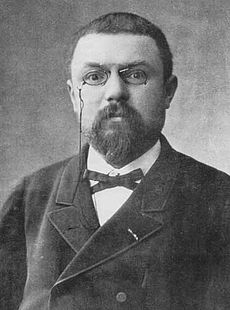
Across decades, the hunt for a dark matter particle has looked at many possible solutions—but so far, humanity hasn’t produced a clear answer. Is dark matter a neutrino? An axion? A figment of our imagination? Scientists don’t agree, though experiments from XENON to ADMX continue to strive towards giving us an answer.
“We have to be extremely open-minded about what it might be,” James Bullock, a professor of physics and astronomy at UC Irvine, told Ars. “Dark matter could be even more interesting than we were thinking it was going to be 20 or 30 years ago.”
The built-up confusion surrounding dark matter today can be extremely hard to parse. Recent headlines declared dark matter may not even exist, and even dedicated followers could be forgiven for asking how scientists came up with the idea in the first place. So to better understand dark matter’s place in the Universe, it may be helpful to take a look back at how our ideas about this mysterious material started and evolved over time—it's time to traverse a condensed history of dark matter.
The first mention
As laid out in a recent review by Gianfranco Bertone and Dan Hooper, the earliest references to dark matter only hint at the modern understanding. Toward the end of the 19th century, new images from the budding field of astronomical photography revealed dark regions in the sky. Stars did not appear to be evenly distributed, and scientists wondered if this was because dark regions lacked stars altogether, or if some absorbing matter was blocking their view of other stars.
Lord Kelvin, a Scots-Irish physicist, was one of the first scientists who attempted to estimate the number of dark bodies in the Milky Way galaxy. He used estimates drawn from the observed velocity dispersion of the stars—how fast these stars were orbiting around the core of the galaxy. Information about the speed of these stars allowed him to estimate the mass of the galaxy. There was a difference between that mass and the stars we can see. In one of his Baltimore Lectures on molecular dynamics and the wave theory of light, he concluded that “many of our stars, perhaps a great majority of them, may be dark bodies.”
Henri Poincaré, a French mathematician and physicist, responded to Lord Kelvin’s ideas in his 1906 work “The Milky Way and Theory of Gases”—explicitly using the term “dark matter,” or “matière obscure” in the writing's original French. Though impressed by Lord Kelvin’s ideas, he disagreed with the man’s conclusions. Poincaré wrote that “since his number is comparable to that which the telescope gives, then there is no dark matter, or at least not so much as there is of shining matter.”
Poincaré ended his paper on an uncertain note. Physicists, armed with a mistaken understanding of what powered stars, estimated that they can only exist for “fifty millions of years” before dying out. Given the relative brevity of a sun’s lifespans on the cosmological timescale, wouldn’t we expect to see a greater amount of dark matter in the form of dead stars? He left the question unanswered.
It’s easy to see that in this early period, dark matter literally meant dark matter: regions in the sky that lacked light and that scientists speculated may represent dark bodies. But hold onto your hats (and 19th century monocles)—the next few decades would bring about significant changes in our understanding of dark matter.
Data leads to new questions
The first major evidence that dark matter may actually be much more common than previously thought came from the work of Swiss-American astronomer Fritz Zwicky. After studying the Coma galaxy cluster, he determined that it did not contain enough visible matter to hold itself together. While the 800 galaxies he studied should have a velocity dispersion of 80 kilometers per second, he found that the real value was closer to 1,000 kilometers per second. This meant stars were traveling so fast that they should escape their mutual gravitational pull.
The fact that they hadn’t implied the galaxies had more mass than could be accounted for with visible matter alone. “If this would be confirmed,” Zwicky wrote, in his 1933 paper. “We would get the surprising result that dark matter is present in much greater amount than luminous matter.” The additional mass from this theorized dark matter would help explain how the galaxy cluster is able to hold together via gravitational attraction.
Later calculations showed that Zwicky’s estimate of the mass-to-light ratio was too large, by a factor of about 8, which meant that his estimates for the amount of dark matter were too high. Even still, his work paved the way for our understanding that most of the mass of a galaxy cluster is actually not in the form of atoms.
Like others that came before him, Zwicky still felt that dark matter was composed of material such as cold stars, other solid bodies, and gases. As of yet, the scientific community had no compelling evidence that this missing mass could be anything else.
reader comments
73